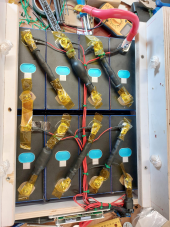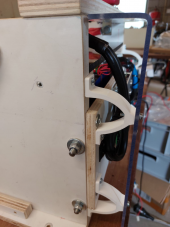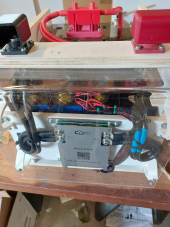After some discussion in this thread, here's my battery build.
With regards,
Martijn
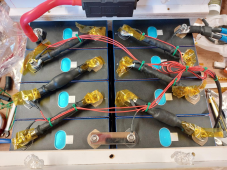
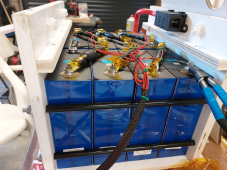

- bottom plate and end plates: 19mm ply
- 8 cells currently measuring 25.6v
- 8mm threaded rods to 'clamp', cells are snug, can't move em by hand
- .5mm phenolic paper as insulator between cells, while the cells are somewhat clamped, at the bottom and top, there's still some room, about 1-2mm (see photo)
- about 8mm polycarbonate (now still covered in protective film) above the cells
- BMS will be mounted on the polycarbonate
- main positive directly to fuse, class T-fuse has been ordered, but I've been told they're are hard to come by currently, so will be replaced later
- cells connected using flexible (braided) cable (50mm2) when going from cell to cell in direction of expansion, 1 solid busbar in non-expansion direction
- all connections are crimped using hydraulic crimping tool
- applied conductive paste to all cell connections
- all balance/monitoring leads tied down, balance leads connected via additional nut if cell post was long enough, if not, directly under flange nut
- all connections torqued to 5Nm
- battery-connection positive and battery-connection negative (with covers, not on photo) to be mounted properly later on, from positive to main switch
- hope to 3d-print some terminal covers later, although the polycarbonate covers the cells
- additional thinner polycarbonate sheet on top, next to battery-connections, to cover BMS, sides are left open
- complete battery will be bolted to the floor using 4 m6 bolts
- cell connections loosening up due to vibration
- compression or lack thereof ( what is an acceptable 'buldge'?
- possible alternative position for BMS, put it on the (open) side next to the main positive/negative connection for less stress on BMS wires?
With regards,
Martijn







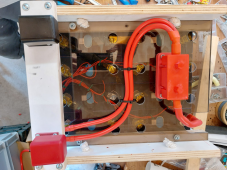

.HEIC?width=960&height=720&fit=bounds)
